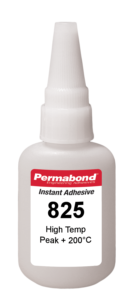How do adhesives for electronic assembly differ from general engineering adhesives? Are they stronger? Faster? Do they resist higher temperatures? Have less volatiles or odor?
Certain specifications and requirements are unique to the electronics industry. For example, electrically conductive epoxies are silver filled for the required conductivity. These epoxies are understandable very expensive, which would make them inappropriate for other applications. Other requirements for some electronic applications make adhesives designed for the application undesirable to other industries. For example, the very fast cure of single component adhesives required in electronic assembly results in products with very short shelf life that require frozen storage.
However, most adhesives marketed specifically for electronic assembly are really no different from general engineering adhesives. The marketing of the products to a specific industry allows us to that information relevant to that industry.
The same single part epoxy electronic engineers use to encapsulate relays, microchips, and bond heat sinks may also be marketed to others. Examples include engineers in the:
The difference is that the motor manufacturer is not concerned with the product’s biocompatibility, and the needle manufacturer is not concerned with the impact strength on neodymium.
An epoxy is an epoxy, be it meant for a toy train, a medical device, or the latest computer technology, it is an epoxy. There is no magic in it being an Electronic Epoxy.

Many manufacturers in various industries prefer low odor cyanoacrylates to improve the worker’s comfort. For manufacturers of electronics, the blooming or chlorosis (the white powdery effect on the area surrounding the bond) can be problematic on sensitive electronic components. Whether the low odor adhesive bonds plastic dice on clocks sold in Las Vegas or to keeps the electronics clean, the product of choice is a low bloom/low odor cyanoacrylate.
So when sourcing an electronics adhesive, choose a material based on the specifications, quality, and desired process – not the hype.
For further help and advice, please contact Permabond.